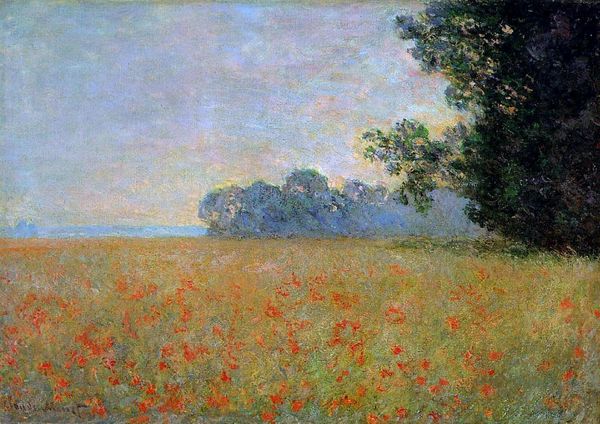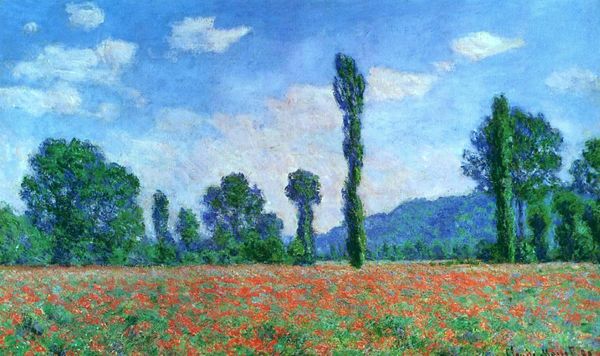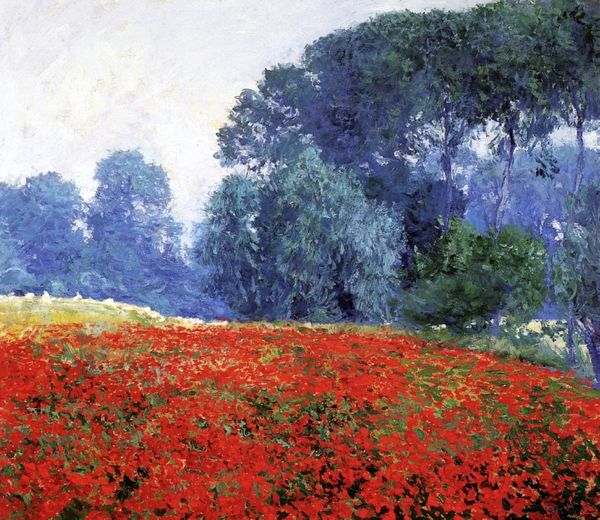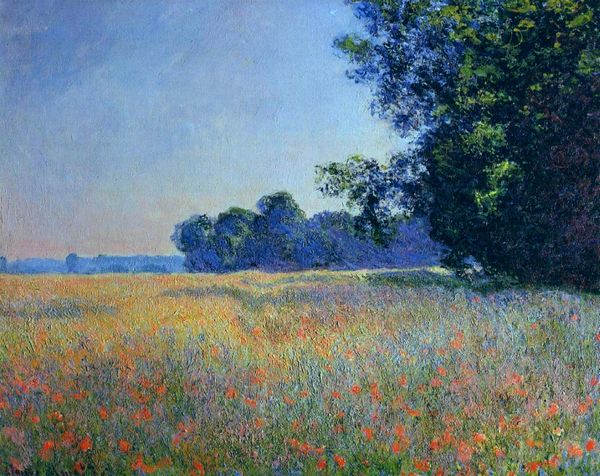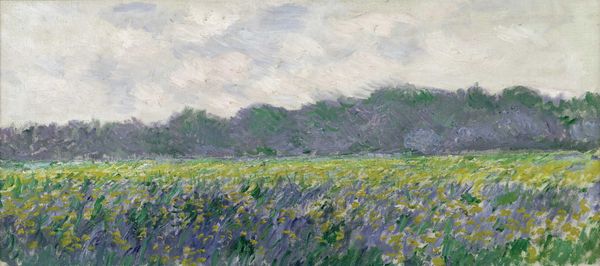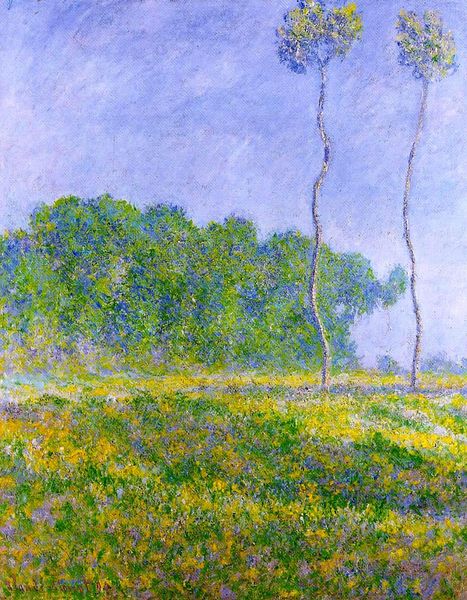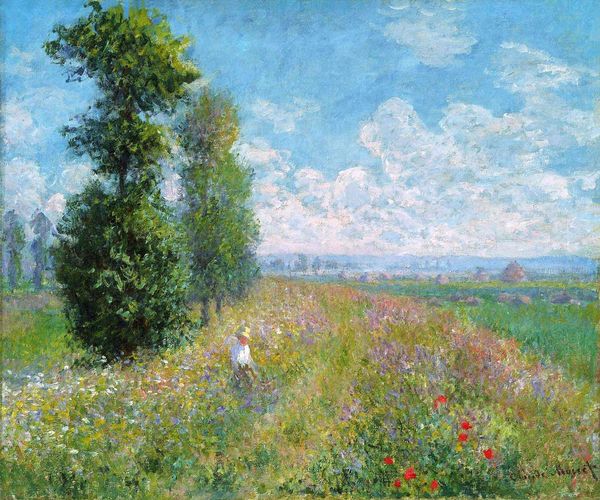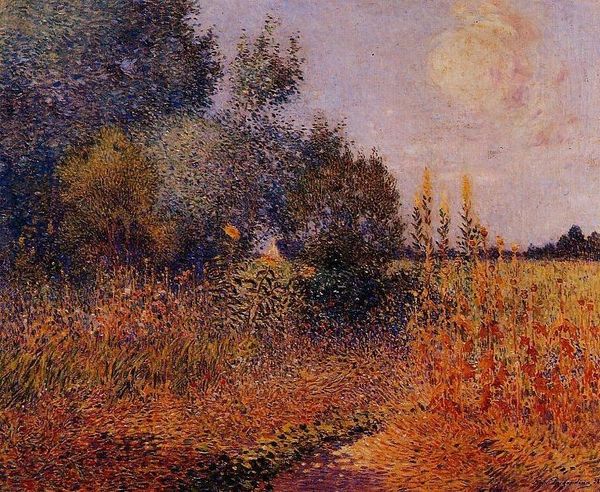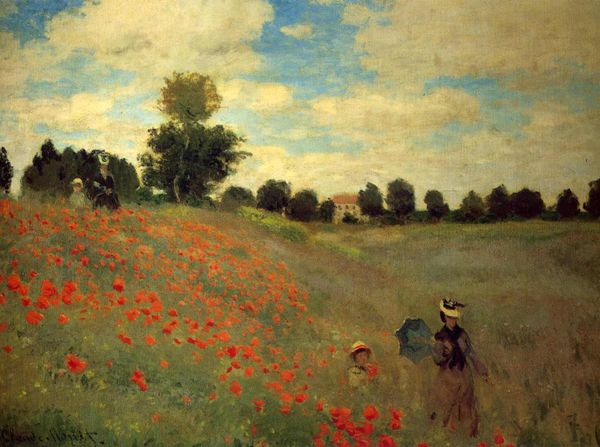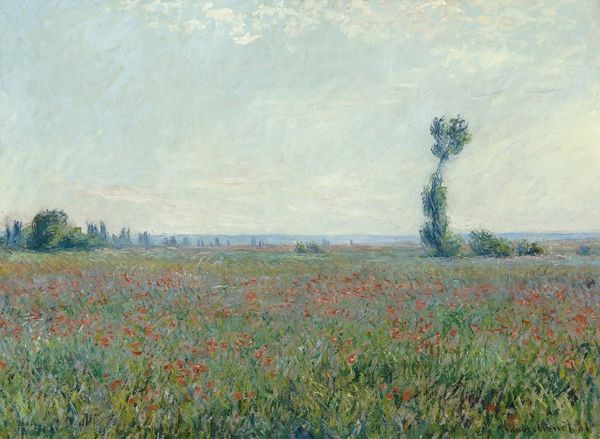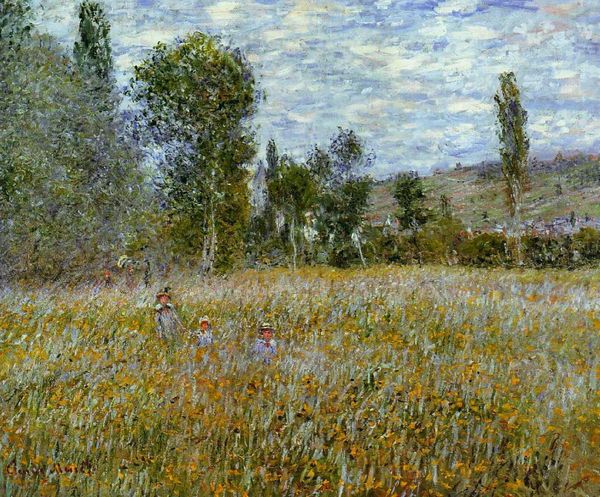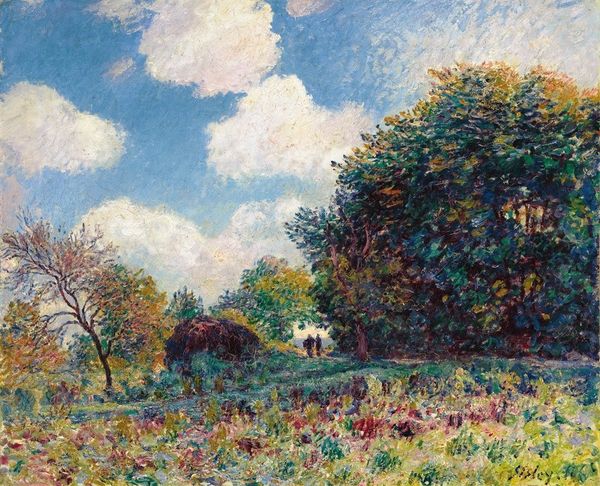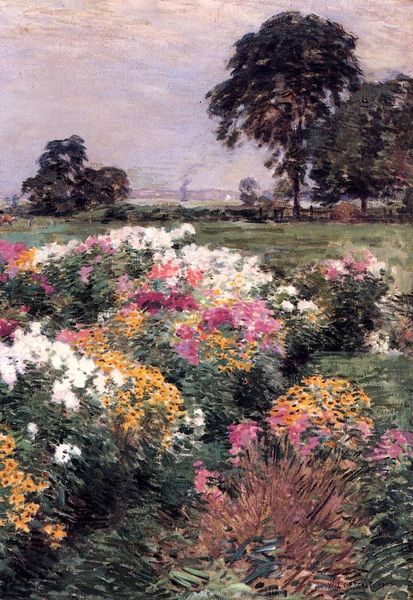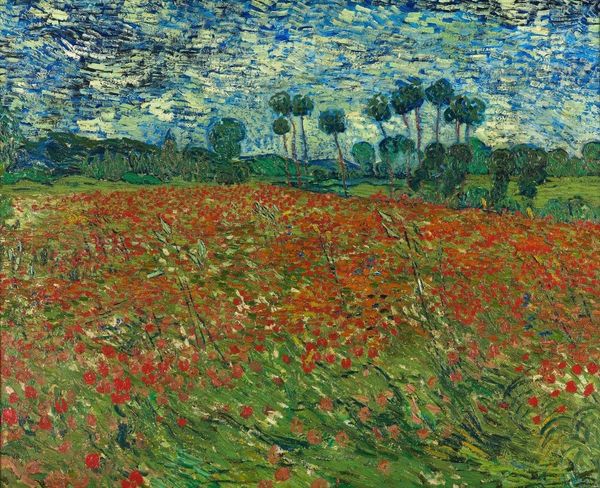
painting, plein-air, oil-paint
#
painting
#
impressionism
#
plein-air
#
oil-paint
#
landscape
#
figuration
#
geometric
#
post-impressionism
#
modernism
#
realism
Copyright: Public domain
Editor: So, this is "Poppies at Giverny" by Claude Monet, painted in 1887. It's an oil painting, capturing a field of poppies. It's a fairly typical landscape but strikes me as unusually dark, especially given Monet's later work. What elements do you find particularly interesting about the painting? Curator: The disposition of forms compels observation. Note how the foreground's riotous field of poppies, executed with swift, impasto strokes, gives way to a band of somber trees looming beneath an overcast sky. The high horizon line and relative flatness of the picture plane function to compress pictorial space. Do you observe the strategic color orchestration within the composition? Editor: I do now that you mention it! I noticed the overall tone first, but the reds and greens of the field are really offset against the darker blues and greens of the trees. So the relationship of those colors is more important than the subject matter? Curator: Precisely. Consider the relationship between line and color as compositional devices, for example, and their strategic impact upon the observer. What impression is made through Monet’s manipulation of our field of vision, as defined and created purely by visual qualities? Editor: The contrast really does give it tension. Thanks! That helps me see it in a completely new way. Curator: My pleasure. Such paintings offer sustained richness in pure visual investigation.
Comments
No comments
Be the first to comment and join the conversation on the ultimate creative platform.
